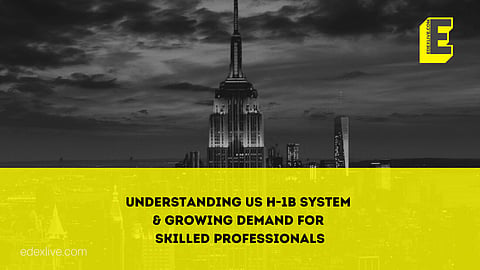

The United States has long been a top destination for Indian students seeking higher education and career opportunities. In the 2023-2024 academic year, over 3,30,000 Indian students were enrolled in US institutions, marking a 23% increase from the previous year.
As these students transition from academics to the workforce, securing employment through programmes like Optional Practical Training (OPT) and the H-1B visa remains a key priority. However, evolving immigration policies, shifting labor market dynamics, and loopholes within the H-1B system continue to shape the opportunities available for Indian graduates.
From OPT to H-1B: Transitioning to employment
Upon completing their degrees, many Indian students utilise the OPT programme, which allows them to gain practical work experience in the US. In 2023-2024, participation in OPT surged by 41%, reaching 97,556 Indian students, as reported by the Open Doors Report.
For STEM graduates, the OPT programme offers a significant advantage — a 24-month extension beyond the standard 12 months — allowing them to work in the U.S. for up to three years post-graduation. While recent discussions indicate no immediate changes to the OPT programme, it remains crucial for international students to stay updated on policy shifts that could affect their work authorisation.
As the number of Indian students in the US continues to grow, major employers are actively hiring talent through OPT. Leading technology companies like Google, Microsoft, and Amazon recruit international students for software engineering and other technical roles, recognising the unique expertise that these graduates bring. Beyond the tech sector, industries facing labor shortages — including healthcare, finance, and engineering — are also hiring Indian graduates. Companies like Goldman Sachs, Deloitte, JPMorgan, Tesla, and Ford have increasingly tapped into this talent pool to fill roles in risk management, data analysis, and mechanical engineering.
The H-1B visa programme is designed to enable US employers to hire foreign professionals in specialized occupations that require advanced knowledge and technical expertise. Indian nationals have consistently represented a significant share of H-1B recipients, reflecting their strong presence in globally competitive industries.
According to data from the US Citizenship and Immigration Services (USCIS), in the fiscal year 2019, approximately one-third of all approved H-1B petitions were granted to individuals born in India. The next largest group of beneficiaries came from China, though their representation was notably smaller.
This trend highlights the growing demand for skilled professionals from India, particularly in sectors that drive innovation and technological advancement. With India producing a highly qualified and globally competitive workforce, many students and professionals pursue higher education and career opportunities in the US to contribute to these dynamic industries.
Recognising the immense talent pool from India, discussions around enhancing US immigration policies, including initiatives like the Gold Card, have gained momentum.
The Gold Card, a proposed long-term work visa, aims to provide high-skilled professionals, including international graduates from US institutions, with more stability and opportunities to build their careers in the country.
Such initiatives could further boost employment prospects for Indian talent while strengthening bilateral educational and economic ties between India and the US.
Policy shifts and immigration reforms
Recent policy discussions suggest potential changes that could benefit Indian graduates seeking long-term employment in the US:
Prioritisation of US Graduates: Proposed reforms may prioritise H-1B applicants with degrees from US institutions, increasing approval rates for Indian students.
Expanding Work Visa pathways: New initiatives, such as the proposed "Startup Visa" for entrepreneurs, could create alternative employment routes beyond traditional work visa categories.
